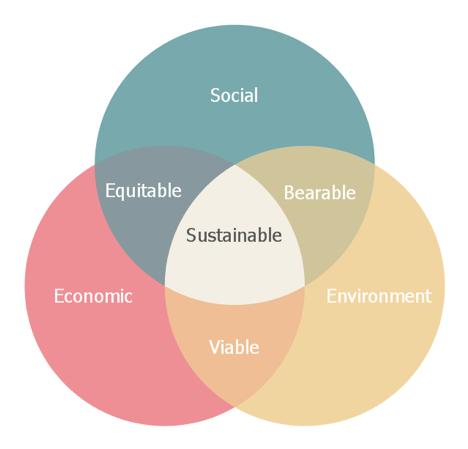Questions about this module? Get support from one of our experts:
9:00AM-4:00PM (AST) – LIVE virtual office hours for participants or by email at sopscaribbean@gmail.com
Module prepared by…

Dr. Julie Ladel is a recognised Integrated Water Resources Management specialist. An astute interlocutor for high-level stakeholders, the participation of women at all level of local, national and regional development.

Laura Nieuwenhoven has experience in various aspects of water resources management and hydrogeology, including water supply, water and sanitation. She has worked with various modeling packages including IWRM modelling using WEAP model, and has executed projects for various international NGO’s, multilateral organisations, bilateral donors, government ministries and engineering contractors.
Introduction
Water is the most vital natural resource and its integrated management is necessary for sustainable development. However, conflicting competing uses have resulted in water resources management issues, principally a water governance crisis in terms of securing water for people, securing water for food production, protecting vital ecosystems and gender disparities. Consequently, the concept of integrated water resources management (IWRM) was developed and recognised as an appropriate tool for the management of water resources in a sustainable manner.
This module introduces the key concepts around water management and climate risk management that form the basis for all other modules this week.
Objectives
Upon completion of this module, you will be able to:
- Develop a deeper understanding of integrated water resources management;
- Identify the next steps in preparing an IWRM plan;
- Have insight in the impacts of climate change and how to assess them;
- Familiarize yourself with climate change adaptation options and how to employ these to increase climate resilience.
To know in this Module
- Concepts and principles of IWRM: catchment level, water demand, sectoral versus integrated water management, stakeholder participation, water as economic good.
- IWRM planning and implementation: enabling environment, development of a catchment-level plan, water resources planning as (non-regulatory) utility, IWRM plan implementation.
- Climate risk management concepts and principles: climate change impacts in the Caribbean, resilience and adaptation, the link between IWRM and climate change, community vulnerability.
- Climate change adaptation: climate-resilient business planning, adaptation options.
To-Do in this Module
| Topic | Duration |
|---|---|
| Concepts and principles of Integrated Water Resources Management | 15 min |
| IWRM planning and implementation | 30 min |
| Concepts and principles of climate risk management | 30 min |
| Climate change adaptation and resilience | 45 min |
Key concepts: integrated water resources management, climate change impacts, climate adaptation, climate resilience
1. Concept and Principles of Integrated Water Resources Management
Water is the most vital natural resource as all of life is dependent on it. It is a fundamental resource for human survival and development as well as the environment.
The amount of water available to each person is falling considerably as growing human populations continue to place tremendous pressure on diminishing water resources. The Caribbean region has the least water available per capita as compared to other Small Island Developing States (SIDS) regions. The island of Barbados for example is ranked among the ten most arid countries in the world (Grenada, 2007). This illustrates the importance of sustainable water resources management in the Caribbean region, especially in the light of changing climatic patterns due to climate change.
1.2. What is Integrated Water Resources Management?
GWP (2000) defines Integrated Water Resources Management as a process which promotes the coordinated development and management of water, land and related resources in order to maximise economic and social welfare in an equitable manner without compromising the sustainability of vital ecosystems. Hence, IWRM is related to the three pillars of sustainable development (environment, economic and social development; see Venn diagram below).
In IWRM, all the different uses of water resources are considered together. These uses range from water for domestic purpose to water for agriculture, to water for commerce and industry to water for environment.

Dublin Principles
The Dublin Statement on Water and Sustainable Development, also known as the Dublin Principles, came from the 1992 International Conference on Water and the Environment (ICWE), Dublin, Ireland. The declaration sets out recommendations for action at local, national and international levels to reduce water scarcity, through the following four guiding principles:
- Fresh water is a finite and vulnerable resource, essential to sustain life, development and the environment;
- Water development and management should be based on a participatory approach, involving users, planners and policy-makers at all levels;
- Women play a central part in the provision, management and safeguarding of water;
- Water has an economic value in all its competing uses and should be recognized as an economic good.
The Dublin Principles form the basis for the Integrated Water Management approach.
Interdependency of sectors/water users
Traditional water management was on basis of sectoral planning, with each sector having their own sectoral plan including planning of water use. The basis of IWRM is that different uses of water are interdependent. For example, water abstractions for irrigation from a river, or from a certain aquifer, might impact drinking water supply downstream in the same river or due to dropping groundwater levels in the same aquifer. Managing freshwater and balancing water use among sectors are emerging as two of the most important issues to the Caribbean islands.


Stakeholder participation
IWRM places emphasis on involvement of all stakeholders. These can include agriculture, water supply, wastewater, mining, industry, the environment, fisheries, tourism, energy sector, transport and local communities. One example of successful stakeholder participation are the Water User Associations in Guyana, established throughout the coastal region in 2006. They promote proper drainage and irrigation structures and assist farmers to play a more integral role in managing their agricultural water supply.
Public participation remains a key challenge. Customers often have little influence over the service provider or any way of holding them to account, which is not in line with the Dublin Principle on a participatory approach to water management involving users at all levels.
Cashman (2018) identified that over the last decade, the most successful IWRM interventions have been those that addressed specific issues identified by stakeholders at national and community levels. These projects were carried out by local partners, contributing to their success and to capacity building. He concluded that projects that had a specific set of objectives and deliverables to be achieved over the short to medium term were most likely to result in positive change.
